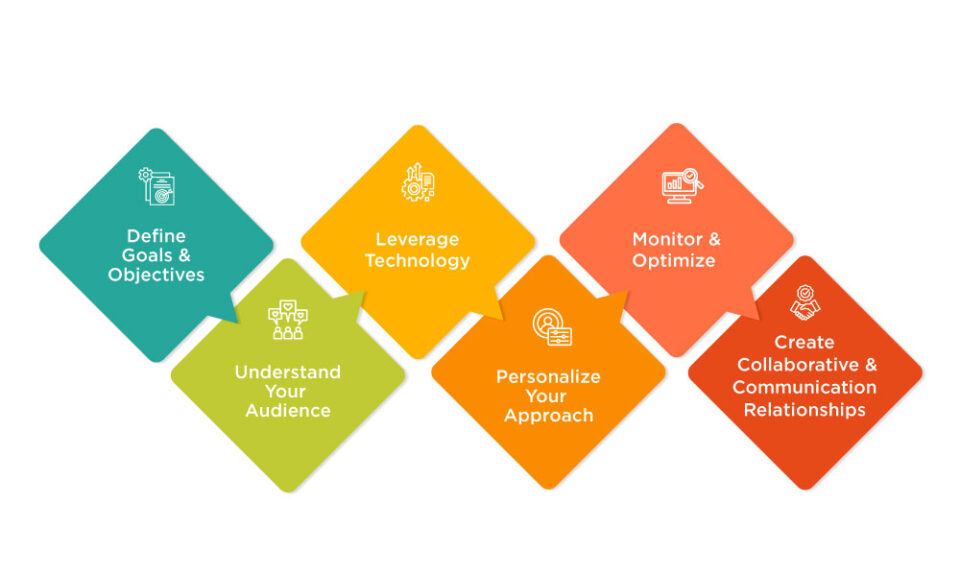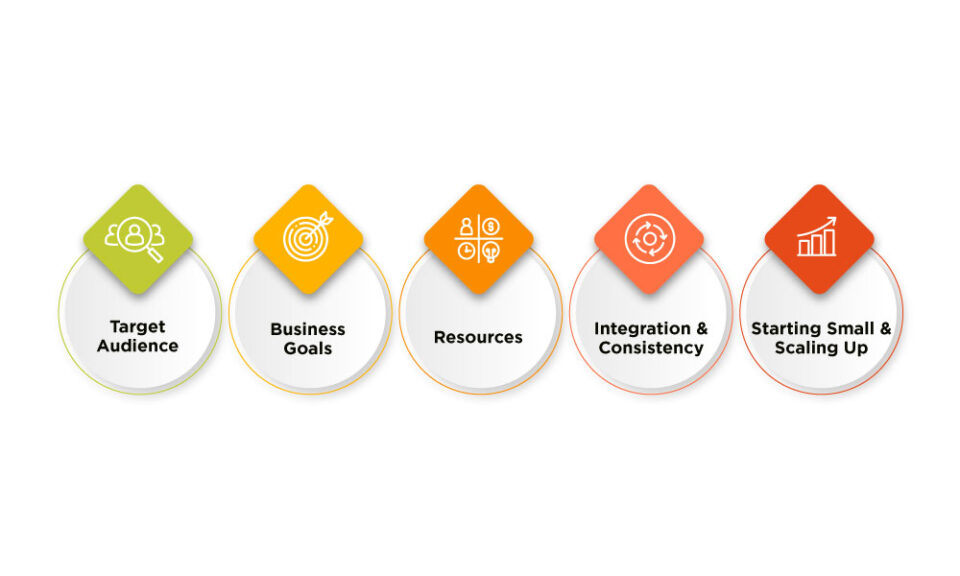In today's digital world, businesses have many channels and platforms to reach their target audience. It is hard to evolve a cohesive and effective marketing strategy. Thereafter, cross-channel marketing steps into the process. It is an approach under which channels are combined to offer one unified and consistent customer experience. This article defines cross-channel marketing and focuses on how businesses can bring out the best in it.
What Is Cross-channel Marketing?
Cross-channel marketing brings together various channels to a single campaign and does not break the customer experience during delivery. In contrast to multi-channel marketing, where each channel is self-sufficient, flexibility for all the channels is secured under the roof of cross-channel marketing. A business can engage the customer at every possible touch point and ensure message and experience consistency across all platforms.
For instance, according to source, in 2023, social commerce in the US generated USD 68.91 million, accounting for 5.9% of all online sales. This marks a significant rise from USD 39.51 million in 2021.
Key Components of Cross-channel Marketing
- Integration: Cross-channel marketing is based on the integration of different channels of marketing. This implies that all the channels, be they online or offline, need to be interlinked and oriented toward achieving one goal.
- Consistency: There should be consistency pertaining to the messages and branding of the organization in this mode of marketing. Customers should get the same message and experience, no matter which of the channels they would like to use.
- Customer-Based: Cross-channel marketing is driven by a totally customer-based approach. All actions are oriented to understanding the customers' needs, preferences, and behaviors to provide a personal and relevant experience.
- Data-Driven: Good cross-channel marketing relies on facts and analytics. It is about collecting and analyzing data coming in from all kinds of channels that would help companies bring insights from customers' actions into life. That way, it helps in the optimization of marketing strategies.
How to Implement Cross-Channel Marketing?
- Identify Your Channels: The very first step to cross-channel marketing is determining the relevant channels for your business and target audience, be that social media, email, website, mobile apps, offline channels like print, and in-store promotions.
- Create Unified Strategy: Design a consistent strategy in keeping with all the identified channels. Be consistent in message and branding across all platforms. For instance, Starbucks launched The Frappuccino Happy Hour campaign by updating their website, running TV commercials, sending in-app messages, and using social media to create a cohesive compelling customer experience.
- Leverage Technology: Utilize marketing automation tools and customer relationship management systems within available resources to aid and make all cross-channel marketing efforts smoother and easier. Marketing automation tools will enable you to run and analyze data, execute a campaign, and track customer interaction.
- Personalize Your Approach: Use data and analytics to get insight into the preferences and behavior of your customer. Use these communication pieces and offers that will give a relevant experience to your communication.
- Monitor and Optimize: Keep tracking the performance of your cross-channel marketing campaigns regularly. Track key metrics using analytics and find out what need's improvement. Optimize strategies in the light of the insights gained.
For example, Sonos enhances their social media marketing by engaging personally with potential clients, guiding them from social media to their website. This cross-channel strategy effectively converts interest into sales.
How to Create a Cross Channel Marketing Strategy?
An effective cross-channel marketing will require a few basic steps to be taken for confirmation of a cohesive approach. Here's an elaborate guide designed to help you get on your way.

Define Goals and Objectives
- Business Goals: Be very clear about what you would like to attain with a cross-channel marketing strategy. This might mean increasing brand visibility, driving sales, improving customer engagement, or boosting customer loyalty.
- Set Specific Goals: Set the goals to be measurable, attainable, relevant, and time bound.
Understand Your Audience
- Create Buyer Personas: Characterizing a target audience aids in detailing their profiles with information on demographics, preferences, behaviors, and pain points.
- Map the Customer Journey: Knowing the awareness, consideration, purchase, and stages that customers go through, identify the touchpoints at which you can engage them.
- Choose the Right Channels: When we know whom to target and what their interests are, we must choose appropriate channels for our ads.
- Identify Relevant Channels: Based on the research of the target audience segment, identify channels most likely to include the target audience. This can be through social media, e-mail, display on websites, mobile applications, search engines, or offline channels like print and events.
- Integration: Ensure that the selected channels give the least amount of friction to customers. Messaging and general branding elements are applied across all channels and therefore must be coherent.
- Create a Cohesive Plan: Come up with a cohesive marketing plan that explains how each channel is going to help attain your goals, and be sure that the message, branding, and goals are aligned across all platforms.
- Coordinate Efforts: Keep all marketing efforts focused and coordinated. This could involve the need for regular meetings and communication between different teams and departments.
Leverage Technology
- Use Marketing Automation Tools: Use tools that can enhance your management and automatic performance of marketing over multiple channels. Such tools will help you in campaign management, analysis of data, and customer relation management.
- Integrate Data: Ensure data integration from all these channels in one place. It would deliver a holistic customer view and, consequently, optimization of your marketing strategies.
Personalize Your Approach
- Segment Your Audience: Categorize your audience into segments based on their features and behaviors, therefore getting the ability to customize your marketing messages to different groups.
- Deliver Personalized Content: Use data and insights to create personalized content that is relevant to all your segments. This can be a great way to raise engagement and conversion rates.
Monitor and Optimize
- Track Key Metrics: Monitor the performance of cross-channel marketing campaigns closely. Track key metrics such as engagement and conversion rates and ROI.
- Analyze Data: Analytics should be used to assess consumer response and campaign performance. Identify which segments are working and which segments need improvement.
- Implement Optimization Strategies: Make data-driven decisions to optimize your marketing strategies. This can involve changes in message, target, or channel mix.
Create Collaborative and Communication Relationships
- Encourage Team Collaboration: Develop such an environment where different sorts of teams and departments work cohesively to achieve an integrated approach toward common objectives. This increases your chances of success in cross-channel marketing.
- Maintain Open Communication: Ensure all the stakeholders participating in marketing campaigns communicate regularly. Coordination helps align efforts, and issues can be quickly sorted out.
How Many Channels Does Your Cross-marketing Channel Include?
Your cross-channel marketing strategy combines a few channels into one. It depends on what your business goals and targets are and on available resources. Among the most important factors that would decide how many channels to include are the following:

Target Audience
- Demographics and Preferences: This should be understood based on what channel your audience spends the most time on, as the younger demographics spends their time on TikTok, Instagram, and other professional platforms such as LinkedIn, while older demographics would still show up on email or Facebook.
- Behavior: The analysis of how customers tend to engage across various channels shows that some might like to browse the website, a few might be inclined toward the feasibility of mobile apps, or perhaps the in-store experience.
Business Goals
- Brand Awareness: To build brand awareness, a mix of broad-reaching channels, including TV, social media, and online advertising, could be deployed to good effect.
- Customer Engagement: To ensure good customer engagement, select channels that allow for better interactivity such as social media, email marketing, and mobile apps. For example, post pictures and videos of the new collection on Instagram and Facebook, using hashtags and engaging captions. You can also run ads targeting the followers.
- Sales and Conversions: Concentrate on the online platforms that are driving email marketing, search engine marketing (SEM), and e-commerce-related channels.
Resources
- Budget: Ensuring you can manage to put together enough budget to manage and optimize each channel effectively or else it will lead to an inactive campaign.
- Team and Tools: Ensure that the right team and tools are managed on multiple channels. This includes creation, data analysis, and customer support.
Integration and Consistency
- Integration: Choose channels that are easily integrated, so that customers get a seamless experience. Customers must receive a consistent message and brand all through.
- Analytics and Data: Ensure you can track and analyze the data from all the selected channels to measure performance and optimize your strategy.
Starting Small and Scaling Up
- Pilot Programs: Begin with the small number of key channels that are most applicable to your targeted audience and goals, and then scale up. Test and vet your strategy before moving to other channels.
- Scalability: Add new channels to your strategy, as you gain insights and resources. Make sure that each channel aligns with the overall marketing goal and is manageable with relative ease.
Common Channels in Cross-Channel Marketing
- Social media: Platforms such as Twitter, Instagram, Facebook, LinkedIn, and TikTok.
- Email Marketing: Personalized Email campaigns creation and sending newsletters.
- Web and SEO: Keywords and search engine optimization.
- Mobile Apps: Engaging with customers through mobile applications.
- Paid Advertising: Online ads comprise Google advertisement, social media platforms and display ads.
- Offline Channels: Printing Media, in-store promotion, events, and direct mail.
For instance, Mercedes-Benz has completed a highly potent cross-channel marketing campaign for its new model CLA with pages including digital and social media paid media, owned media, and earned media, and content marketing.
Benefits of Cross-Channel Marketing
- Enhanced Customer Experience: Cross-channel marketing ensures that customers get consistent experiences through email, web, mobile, or any other source. This increases customer satisfaction, hence their loyalty toward the business.
- Increased Engagements: Businesses can increase interaction and engagement with their customers, by reaching with them on multiple platforms.
- Better ROI: Businesses can optimize their marketing efforts and allocate the required resources more efficiently, that leads to higher return on investment.
- Improved Customer Insights: By integrating multiple channel data, businesses can gain insights about the customers that help them decide better and tune their marketing strategy as per the requirements.
Challenges of Cross-Channel Marketing
- Data Integration: Integrating data from different channels can be complex and challenging. Integration of the data using a specific plan takes place with various issues. Businesses need to ensure that the data is accurate, consistent, and is in accessible way.
- Resource Allocation: Development of cross-channel marketing involves many resources such as budget, personnel, and time. It is, therefore, important for the business to allocate its resources effectively to achieve their marketing goals.
- Consistency: Message and branding consistency on every channel involved is a tedious task. It affects while working with multiple stakeholders and teams.
- Success Measurement: Cross-channel marketing campaigns are difficult to measure in terms of success, as the flow of customer activities across each channel gets very complex.
Best Practices of Cross-Channel Marketing
- Start Small: If you are a beginner in cross-channel marketing, start by using just a few important channels and gradually grow them as your experience and resources increase.
- Be Customer-Centric: The customer should always be the epicenter of any cross-channel marketing activity. Their needs, preferences, and behaviors shall be understood to deliver relevant and hyper-personalized experiences.
- Wisdom in Using Data: Analytics and data provide insight into customer behavior to help in the optimization of your marketing efforts. Develop tools for a single customer view by making your data accurate, consistent, and accessible.
- Collaborate and Communicate: Work collaboratively and communicate properly with your marketing teams and stakeholders. Ensure that everyone is aligned to your cross-channel marketing goals and strategies.
- Continuously Improve: Cross-channel marketing is a continuous process. Keep track and optimization of your campaigns, continuously with insights from data and customer feedback.
Summing Up!
Cross-channel marketing is a powerful activity that allows a business to create a single, consistent experience for its customers through any given channel. Integration across significant marketing channels enables businesses to create more compelling customer engagement and drive better returns on investment. However, implementing cross channel marketing requires continuous optimization, careful planning, and resource allocation. Businesses can successfully navigate the complexity of cross channel marketing and achieve their marketing goals by following best practices and focusing on customer needs.
Would you like to explore any specific aspect of cross-channel marketing further? Visit us at WisdomPlexus!
You may also like to read:




